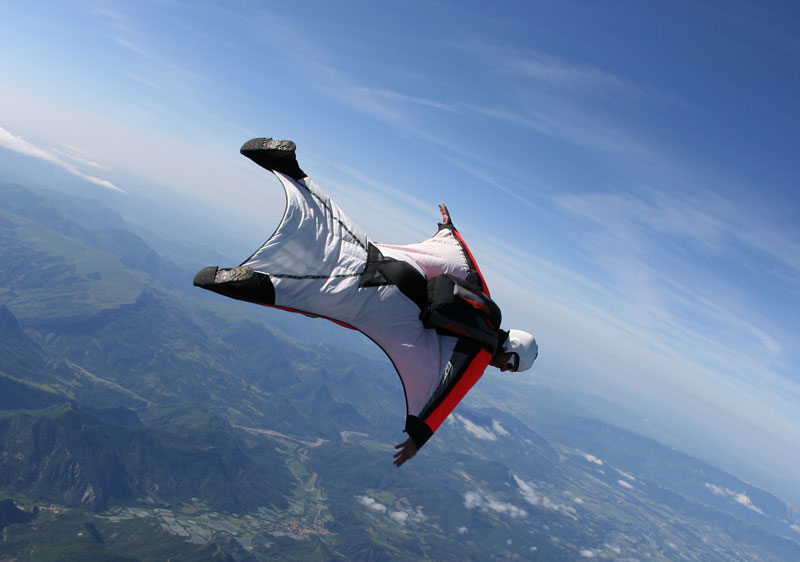Who discovered the commercial wingsuit that allows extreme athletes to fly safely through the air today?
If you think it's scary to look down from a tall building, you'll get goosebumps in the face of the extreme sports we'll be discussing in a moment.

The sport of free jumping from skyscrapers and cliffs, also known as BASE Jumping, with a parachute or a wingsuit, continues to attract the attention of adrenaline junkies despite the worrying death numbers.
Jari Kuosma came up with the idea of making the first commercial wingsuits when he stood on a cliff in Italy, about to do a BASE jump.
The main striking feature of Wingsuit BASE Jumping, which we can see as a branch of Wingsuit jumping, lies in the special clothing worn while jumping and the altitude at which the jump is made.
Jari Kuosma (born 3 March 1969 in Helsinki) is the original developer of modern and commercial wingsuit (as a product), wingsuit flying (as a sport) and owner of BirdMan Inc. Kuosma has over 5000 jumps. He has worked as an Accelerated Free Fall (AFF) Instructor in USA, Sweden and Venezuela. He introduced the first wingsuit training program for skydivers in 1999. A wingsuit instructor program followed the year after.
Flights performed by wingsuit pilots jumping from mountains are called “Wingsuit bases”. Flights made by jumping out of the plane in the same suit are called "Wingsuit skydives". Flights close to the ground and the slopes of the mountains after jumping from the mountain are called proximity flights.
Wingsuit BASE, which is seen as the scarier form of BASE Jumping, consisting of the initials of the English words "building", "antenna", "span", and "earth", is made with a garment inspired by bats and flying squirrels. The feature of this garment is to enable the human body to act as a parachute, thanks to the large pieces of fabric placed between the arms and legs, and to help the person control the flight.
Kuosma began skydiving in 1990. He took part in the breaking of the Finnish record for free-falling formation in 1993, and introduced a Russian low-altitude jumping technique into Finland. He was introduced to wingsuits in 1997, based on those used by Patrick de Gayardon. With Robert Pecnik, he began selling wingsuits in 1999, after making them in Slovenia.
As can be understood from this definition, it can be understood that it is a very dangerous sport when it is considered that the control is in the person himself and in the airflow.
One of the most important features that distinguish Skydive and Base Jump sports is that Skydive athletes have 2 parachutes, one of which is the main parachute and the other is a spare parachute against any malfunction, while Base Jump athletes have only 1 parachute. This shows that Base Jump athletes do not have a second chance.
Another difference that separates these two sports is the jump altitudes. It is possible to feel the danger of the Base Jump when it is considered that the skydiving sport is jumped from a place almost 10 times higher than the Base Jump.
Wingsuit history
Jari Kuosma is the original developer of wingsuit flight and owner of BirdMan Inc. Kuosma has more than 5000 jumps. In 1999 he started the first wingsuit training program for paratroopers. But this extreme sport has an older history.
On February 4, 1912, 33-year-old tailor Franz Reichelt jumped from the Eiffel Tower to test his invention of a parachute and wing combination that resembled modern wingsuits. He misled the guards by saying that the experiment would be done with a mannequin. He hesitated for a long time before jumping. But then he jumped... He crashed to the ground and died.
The wingsuit was first used in 1930 in the USA by 19-year-old American Rex G Finney from Los Angeles, California. The goal was to increase horizontal movement and maneuverability during parachuting. These early wingsuits were made from materials such as canvas, wood, silk, steel, and whalebone. Although some "birdmen" such as Clem Sohn and Leo Valentin claimed to glide for miles, this equipment was not very reliable.
In the mid-1990s, the modern wingsuit was developed by John Carta.
In 1997 Bulgarian Sammy Popov designed and produced a wingsuit with larger wings between the legs and longer wings on the sleeves. Popov's wingsuit was first tested in October 1998, but it never went into commercial production.
In 1999 Jari Kuosma from Finland and Robert Pečnik from Croatia teamed up to create a wingsuit that is safe and accessible to all paratroopers. Kuosma founded Bird-Man International Ltd. in the same year.
